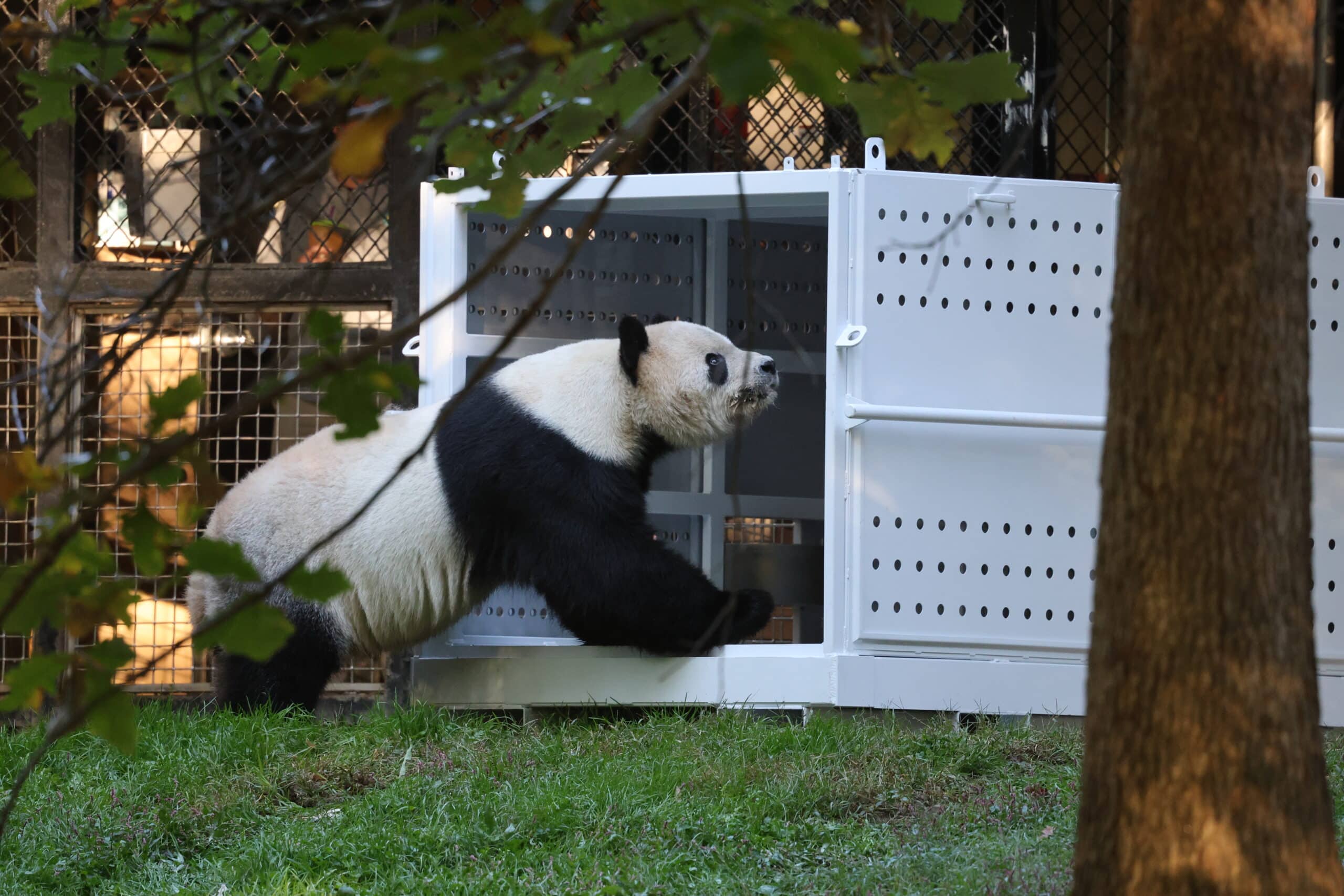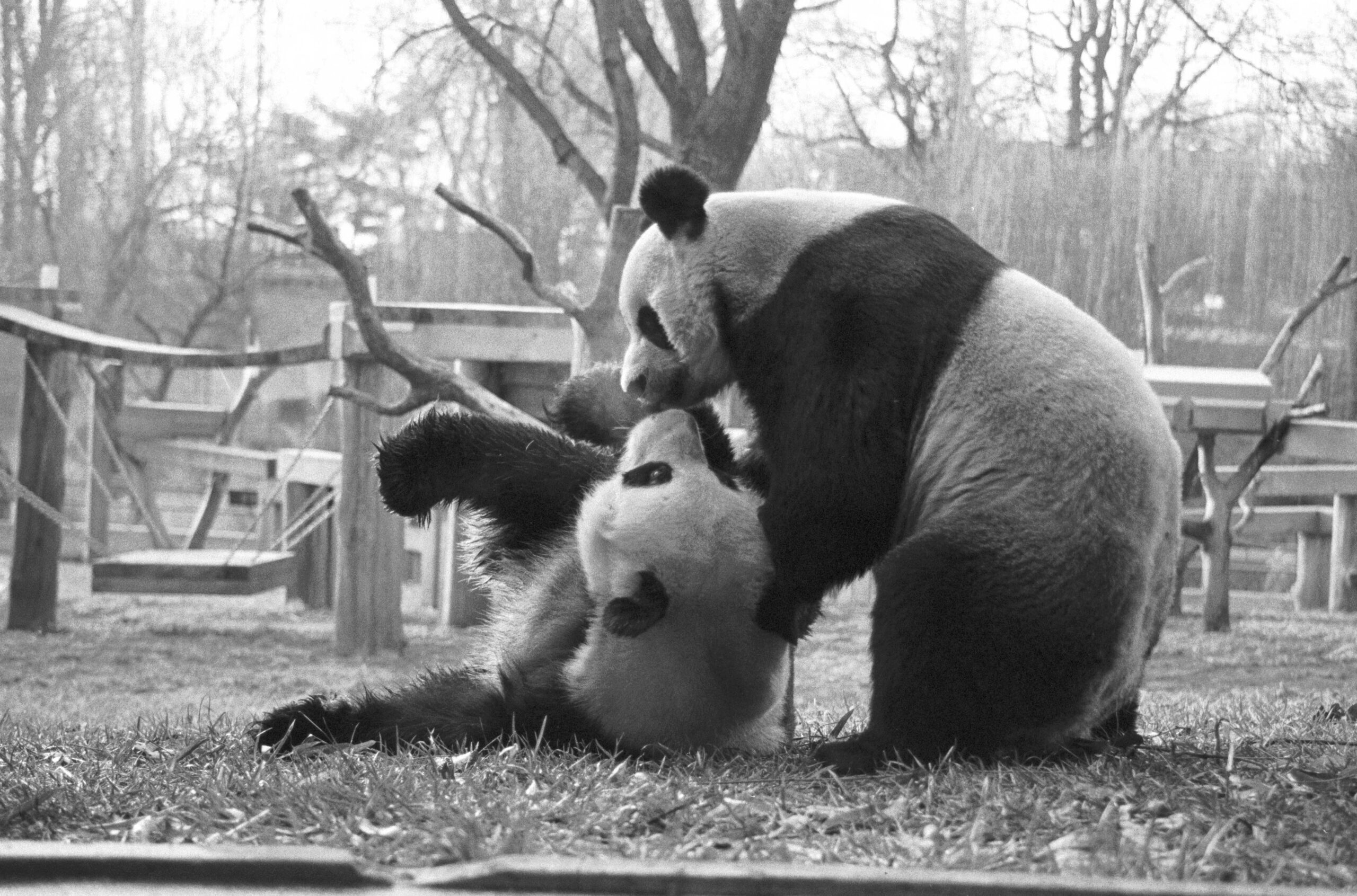Mei Xiang is not pregnant

Two red panda cubs were born at the Smithsonian’s National Zoo in Washington, D.C., and two additional cubs were born at the Zoo’s facility in Front Royal, Va., bringing the total to four in 2011. Unfortunately, female giant panda Mei Xiang is not pregnant but was experiencing a pseudo, or false, pregnancy during the past several months.
Shama, the female red panda at the Zoo’s Asia Trail, gave birth to two cubs in her den June 17. Keepers suspected that she was caring for offspring when she did not respond to their call that morning. A slight squeal was the first indication of a cub. Zoo staff left the mother alone to bond with and care for the cubs in their den. On the seventh day keepers conducted a quick cub check and, with a one-minute window of opportunity, were able to confirm two cubs in the nest box. Likewise, red panda Lao Mei at the Zoo’s Smithsonian Conservation Biology Institute in Front Royal gave birth to two cubs June 5. Keepers have confirmed both cubs are female and have opened their eyes.
Staff is taking precautions to not interfere with the cubs during this critical time. As the opportunity presents itself, they enter the den areas to weigh the cubs and assess their health. Keepers wear a second set of cloth gloves over their standard rubber gloves, which have been rubbed with nesting material and scented with the mother’s feces to cover human scents. All four newborns are steadily gaining weight and appear healthy.
The red panda exhibit is currently closed to visitors for the safety and well being of the mother and cubs. As the cubs grow stronger, the keepers and Friends of the National Zoo volunteers will watch for Shama to allow her cubs to venture out of the den in early fall. At that point, staff will evaluate when the exhibit can be reopened for public viewing. The red pandas in Front Royal have a brand new facility that includes nine outdoor enclosures equipped with numerous insulated dens. Red pandas are born annually and more than 100 surviving cubs have been born at both the Front Royal and Washington facilities since 1962.
National Zoo scientists, veterinarians, keepers and volunteers from the Friends of the National Zoo were keeping a close eye on giant panda Mei Xiang, monitoring her hormone levels and behavior, as well as conducting daily ultrasound exams in an attempt to determine if she was pregnant. (Note: Mei stopped participating in the ultrasound exams after July 3 and remained exclusively in her den.) In late June, giant panda Mei Xiang’s level of urinary progesterone (a hormone associated with pregnancy) began to gradually decline. Upon reaching normal baseline levels, this decline would end in either the birth of a cub or the end of a pseudopregnancy. Based on changes in her behavior, hormone levels and a lack of fetus observed during the ultrasound exams, Zoo researchers have determined that Mei Xiang experienced a pseudopregnancy.
Giant pandas ovulate just once a year. Females undergo a pseudopregnancy when they ovulate but fail to conceive. During a pseudopregnancy, hormonal changes and behaviors are identical to those of a true pregnancy, making it very difficult to determine if a giant panda is actually pregnant or not. This is the sixth time Mei Xiang has had a pseudopregnancy. She gave birth once in 2005 to a male cub, Tai Shan.
Zoo staff expects Mei Xiang to return to normal, hormonally and behaviorally, in the coming days, which includes an increase in appetite and activity level. Although Tian Tian (the Zoo’s male panda) has been on exhibit all summer, Zoo visitors will soon get a chance to view Mei Xiang. The Giant Panda Habitat opens daily at 10 a.m. Mei Xiang’s area of the house had been closed to provide her with a quiet environment in the event that she did give birth.
Source: National Zoo
Click here to read an article form the Washington Post.









